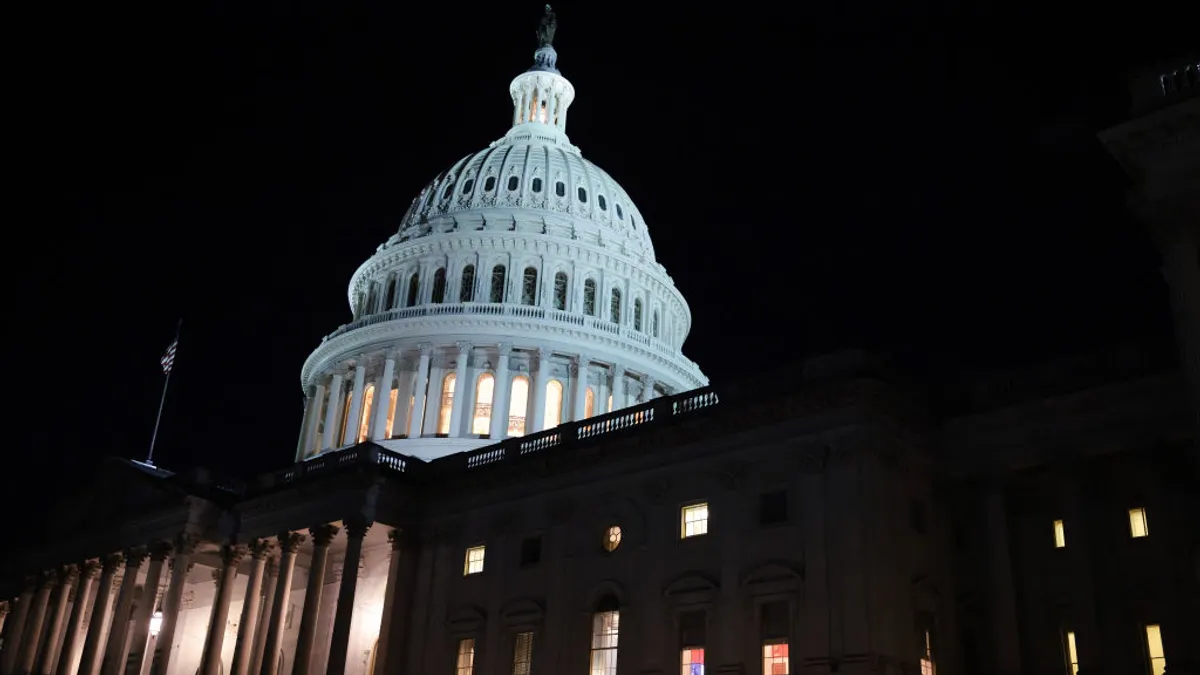In recent years, schools and the federal government have pushed for more streamlined approaches to collecting and harnessing student data. While this data — which includes everything from student grades and assessment scores to addresses, birth dates, and attendance records — was once maintained as hardcopy records, advances in technology have taken it to a new place: The Cloud.
Hardcopy records were phased out in favor of district-based hard drive storage some time ago, but the advent of cloud computing has seen a trend toward the creation of third-party data silos (or clouds). These advances in technology make it easier to track information as a child transitions from elementary school through college.
From an efficiency standpoint, this is great. But the implications of the data being hosted on something as ambiguous and not fully understood as a "cloud" has many teachers and parents concerned about data and privacy abuse. The most common concerns revolve around breaches, both by hackers and marketers.
This pushback has resulted in some drastic measures. InBloom, a Gates-funded nonprofit that houses student data in the cloud, recently announced it would close its doors. The decision followed months of parental protest regarding the collection of data by third-party vendors, as well as many states, including New York, backing out of contracts with inBloom. In some cases, states even created new laws to prohibit or restrict the sharing of student data with such companies.
Acknowledging the controversy, the Obama administration last week released an 85-page report on big data and its use in the United States among consumers and businesses. While the report deals with a plethora of industries and business sectors, it very clearly broaches the topic of big data in education.
In one of its six proposed next steps, the White House said it would make sure student data collected by schools is used for educational purposes.
"Big data and other technological innovations, including new online course platforms that provide students real time feedback, promise to transform education by personalizing learning. At the same time, the federal government must ensure educational data linked to individual students gathered in school is used for educational purposes, and protect students against their data being shared or used inappropriately."
While this is great, it does beg the question of when exactly 'big data' became such an issue in schools.
Let's look at the quick 'big data' timeline:
1974: The Family Educational Rights and Privacy Act of 1974 (FERPA) is created to protect the privacy of student records. The act has three purposes: It gives families the right to request their child's records, the opportunity to amend records, and some degree of control over how their child's data is dispersed and who can access it. While families have a certain amount of agency under FERPA, it doesn't cover everything. For example, schools don't need to get parental consent to release data to other education officials.
2000: The Children's Online Privacy Protection Act of 1998 (COPPA) limited websites and online resources from collecting data on anyone under the age of 13. The act is less education-slanted, dealing more with overall child protection and privacy — specifically as the Internet becomes more of a playground for kids. The increase in commercial companies becoming involved in education, however, has seen COPPA cited more often in the sector.
2005: The federal government announces a new initiative granting money to states that implement Statewide Longitudinal Data Systems (SLDS), free applications that granted districts, schools, and teachers access to historical data on students. The goal was to incentivize states to create data systems that will "capture, analyze, and use student data from preschool to high school, college, and the workforce." By creating tracking ID numbers for all students enrolled in public schools, a state could easily follow the child as he or she progressed through the years. This was the beginning of the "big data" era of education. No longer were "clouds" just for massive corporations, but rather a concept schools were challenged to get behind, as well.
2008: FERPA law is expanded. While only education officials could previously receive student data without parental consent, contracted vendors and school volunteers now had access to the data, with or without parental input. This is when data privacy and clouds became a point of contention. The amendment made it possible for contracted third-party vendors, like inBloom, to collect student data without parental consent.
2009: By now, the federal government had awarded $265 million to 41 states and the District of Columbia for initiatives to create SLDS. Increasing the stakes, the White House decides to make SLDS a reform necessary to win Race to the Top. While many states had already agreed to work with them, there is now more significance to the program. As Aimee Guidera, the executive director of Data Quality Campaign, told NPR, "That [2009 Race To The Top mandate] provided a boost to underscore the work we were doing. It reinforced what states were already doing, raised the priority and made the data issue a sexy one by calling it out as something we needed to focus on."
2011: FERPA law is amended once again. Now, student data can go to education officials, volunteers, contracted vendors, and "authorized representatives" of state authorities. Now that SLDS were expanding so rapidly, it was viewed as unrealistic and a hindrance to efficiency to constantly have to ask parents for data usage permission.
2011: The Shared Learning Collaborative (SLC) — which will later become inBloom — is created. As stated on inBloom's "About" page, "The vision of that group was simple: create a resource that allows teachers to get a more complete picture of student progress so they can individualize instruction while saving time, effort and precious resources."
2012: Other student data companies begin to pop up. Clever, an inBloom competitor, is created. Clever is interesting because, while it essentially does the exact same thing as inBloom and has contracts with 10,000 schools, it hasn't received the same negative public attention.
2013: The Shared Learning Collaborative is re-branded as inBloom, receiving $100 million in support from the Bill & Melinda Gates Foundation. Nine states also sign on to partner with inBloom for data storage.
2013: Education historian Diane Ravitch, as well as student advocacy group Class Size Matters, began pushing back against organizations like inBloom. Ravitch questioned whether or not the company was involved with identity theft. Others speculated over external privacy breaches such as hackers and marketers.
2014: By January, six states had dropped out of their inBloom contracts. By April, New York had also bailed, creating new legislation prohibiting the sharing of student data with third-party vendors or cloud storage providers. By the end of April, inBloom had announced it would be shutting its doors.
2014: The White House releases its 85-page report in which it calls for updates to both FERPA and COPPA to protect students under the current education landscape that has become so intertwined with big data. The White House hopes that by making updates to these laws, all data collected on students will be used solely for education purposes.
So where does this leave us? While inBloom caused a firestorm of controversy over the past few months, other companies doing the exact same thing are not receiving the same critical eye. According to a recent study by Fordham University, 95% of schools and districts are currently using data storage systems similar to inBloom (i.e., third-party clouds). Making the issue more sticky is the detail that an estimated less than 7% of these schools have contractual clauses to restrict the use of student data for marketing or sales purposes.
While it's easy to assume the issue withered with inBloom, it is far from dead. Expect to see more uproar, especially as more parents become curious about the use of big data in schools.
This story is part of our newly expanding K12 coverage. If you would like to subscribe to the Education Dive: K12 newsletter, click here. You may also want to read Education Dive's look at 5 tips for teaching 'grit' in the classroom.
















